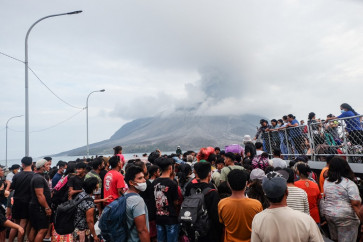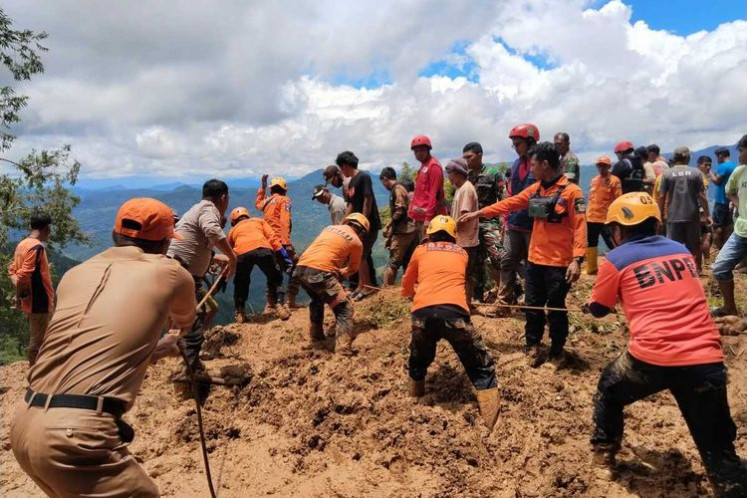Sumatra rainforests in danger
The Forestry Ministry has pledged to improve conditions in the Tropical Rainforest Heritage of Sumatra (TRHS) to save its status as a world heritage by carrying out a five-year master plan
Change Size

T
he Forestry Ministry has pledged to improve conditions in the Tropical Rainforest Heritage of Sumatra (TRHS) to save its status as a world heritage by carrying out a five-year master plan.
The rainforest is currently at risk of being excluded by UNESCO due to rampant illegal logging and infrastructure construction.
'The government is upbeat that in the next five years, everything can get better, so TRHS would no longer have world-heritage-in-danger status,' Hartono told The Jakarta Post.
He was talking on the sidelines of the Inception Workshop on Building a Resilient Tropical Rainforest Heritage of Sumatra for Climate Change Mitigation and Biodiversity Conservation in Medan, North Sumatra, on Wednesday.
The TRHS is one of the UNESCO world heritage sites and encompasses three national parks in Sumatra ' Mount Leuser National Park (TNGL), Kerinci Seblat National Park (TNKS) and Bukit Barisan Selatan National Park (TNBBS).
The TRHS had been named a world heritage by UNESCO in 2004. Seven years later, UNESCO named TRHS a world heritage in danger.
Hartono said the change of status was due to various activities being carried out there currently and in the past, such as illegal logging, the ongoing construction of 30 to 80 kilometers of road in the forests by some regencies and a plan to build a 1,000-km road.
He said ever since naming the TRHS a world heritage, UNESCO had provided assistance funds for conservation. However, he claimed the funding was not much as it was adjusted to the types of activities being carried out. He cited the provision of US$60,000 in funds for the restoration of 100 hectares in the TRHS area.
'We're not worried about losing the funds, but the country's dignity. What would the world say if we were not able to manage this world heritage?' Hartono said.
He said UNESCO had proposed seven solutions: minimizing deforestation, maintaining primary species, halting road construction in the area, stopping mining, establishing boundaries and improving law enforcement and landscape management.
He said the government had tried to apply some of these suggestions and would review the planned construction of new roads in the area and conserve wildlife species.
Cultural coordination, tourism, youth and sports affairs deputy at the Office of the Coordinating People's Welfare Minister, Haswan Yunas, said efforts to preserve the TRHS often received resistance from groups of people.
'Deforestation is still taking place in Mount Leuser National Park. The perpetrators mostly are groups of people, especially former tsunami and Aceh conflict refugees,' said Haswan, adding security personnel had repeatedly curbed illegal logging in the TNGL.
Jakarta UNESCO deputy director and senior program specialist for the ecological and earth sciences unit Shahbaz Khan expressed appreciation for the Indonesian government's efforts to be removed from world-heritage-in-danger status. Shahbaz said TRHS should be conserved because its presence was not only beneficial to Indonesia but also the world.
'If we are able to preserve the biodiversity and forest, it would be useful for future generations,' said Shahbaz.









